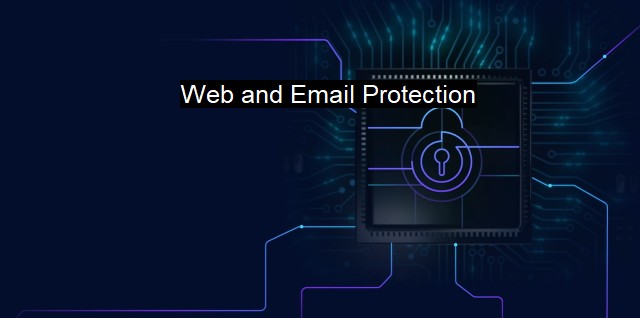What is Web and Email Protection?
Securing Your Cyberspace: The Importance of Web and Email Protection in Cybersecurity and Antivirus
Web and Email Protection is a fundamental aspect of cybersecurity and antivirus measures implemented to safeguard the integrity and privacy of sensitive information involved in electronic communication conducted via web and email. An increasing number of cyber threats, extortion, scams, financial fraud, and identity theft have spotlighted the immense significance of these protections, making them more of a necessity than an option.Web Protection mainly involves securing a person or organisation’s internet browsing experience from potential cyber threats. Referred to as Web filtering or Internet filtering, it works by regulating the content that a user can access while utilizing the Internet. By installing web protection services and cyber defense software, an individual or organisation mitigates the risk of becoming a victim of cyber attacks such as Malware, phishing, ransomware, scareware, and other harmful programs that can corrupt crucial data or extract sensitive information.
The technology behind web protection is based on scheduled scans and real-time analysis through proprietary algorithms and databases filled with known threats. These scans assess the safety of websites and block threats in real-time. Regular updates ensure the database remains updated with the latest discovered threats. The use of machine learning has become crucial for these updates and scanning methods, progressively enhancing the capability of threat detection and protection algorithms.
Parallel to this is the increasing need for Email Protection, which shares a biosphere with the Web Protection. Emails are a frequent point of contact for cyber-attacks aimed at stealing sensitive information. Email Protection primarily involves the use of secure email gateways to prevent online threats from entering cybersecurity perimeters via email.
Email protection services frequently use sophisticated detection techniques like Anti-Spam, Anti-virus, Anti-phishing, and Anti-Spoofing. Anti-Spam helps in blocking bulk unsolicited emails, collectively known as spam, thus preventing the potential concealment of cyber threats within them. Anti-Virus scans emails for malicious attachments, capable of launching harmful viruses on a device when downloaded. Anti-Phishing technology filters out emails used for phishing, a common cyber-crime intending to acquire sensitive data such as usernames, passwords, and credit card numbers, by posing as a trustworthy entity. Anti-Spoofing verifies the authenticity of an email's sender, helping guard against attacks that falsify sender identity to appear credible.
Email Protection software can include link protection that quarantines malicious hyperlinks and data loss prevention modules, stopping sensitive information from leaving the secure environment. They can scan incoming and outgoing mail, providing real-time threat protection while securing users from accidentally sending private data outside their network.
Dangerous files are stripped out and inspected before they reach the recipient, and placeholder notifications let users know the process is happening – thus maintaining productivity while ensuring protection.
"Web and Email Protection" can be considered as vital hurdles that cyber attackers need to bypass to reach sensitive targets. Forming the first line of defense, they counteract those preliminarily thrown tactics by hackers aiming to violate data privacy by sneaking into enterprises or individual's systems.
The cyber landscape changes rapidly, with hackers continuously innovating ways to bypass security defenses. It becomes crucial that web and email protection strategies evolve in tandem. By availing protection services like GDPR and ISO27K, and installing latest-generation cyber security software, users cultivate resilience against cyber-attacks, safeguarding the sanctity of their most valuable assets: their data, privacy, and identity.

Web and Email Protection FAQs
What is web and email protection?
Web and email protection is a cybersecurity measure that aims to protect users from threats that can be encountered through web browsing and email communication. It involves the use of antivirus software to detect and block malicious software and other cyber attacks.What are the benefits of web and email protection?
Web and email protection provides several benefits, including protecting users from malware, phishing attacks, spam emails, and other malicious activity. It helps keep your sensitive information safe and secure by preventing unauthorized access or theft. Web and email protection also ensures that users can browse the internet and communicate through email without compromising their privacy or security.How does web and email protection work?
Web and email protection works by scanning websites and emails for potential threats. The antivirus software will identify any malicious software or suspicious activity and either block it or alert the user to take action. Web and email protection also relies on blacklisting and whitelisting procedures, which block or allow access to certain websites and email addresses based on their reputation and perceived security risk.How can I ensure I have adequate web and email protection?
To ensure you have adequate web and email protection, you should invest in a reliable antivirus software that offers web and email protection features. Make sure you keep your software up to date to ensure it can detect and block the latest threats. Additionally, you should be careful when browsing the internet or opening emails from unknown sources to avoid exposing yourself to potential security risks.| | A | | | B | | | C | | | D | | | E | | | F | | | G | | | H | | | I | | | J | | | K | | | L | | | M | |
| | N | | | O | | | P | | | Q | | | R | | | S | | | T | | | U | | | V | | | W | | | X | | | Y | | | Z | |
| | 1 | | | 2 | | | 3 | | | 4 | | | 7 | | | 8 | | |||||||